100 Years of Wedding Dresses
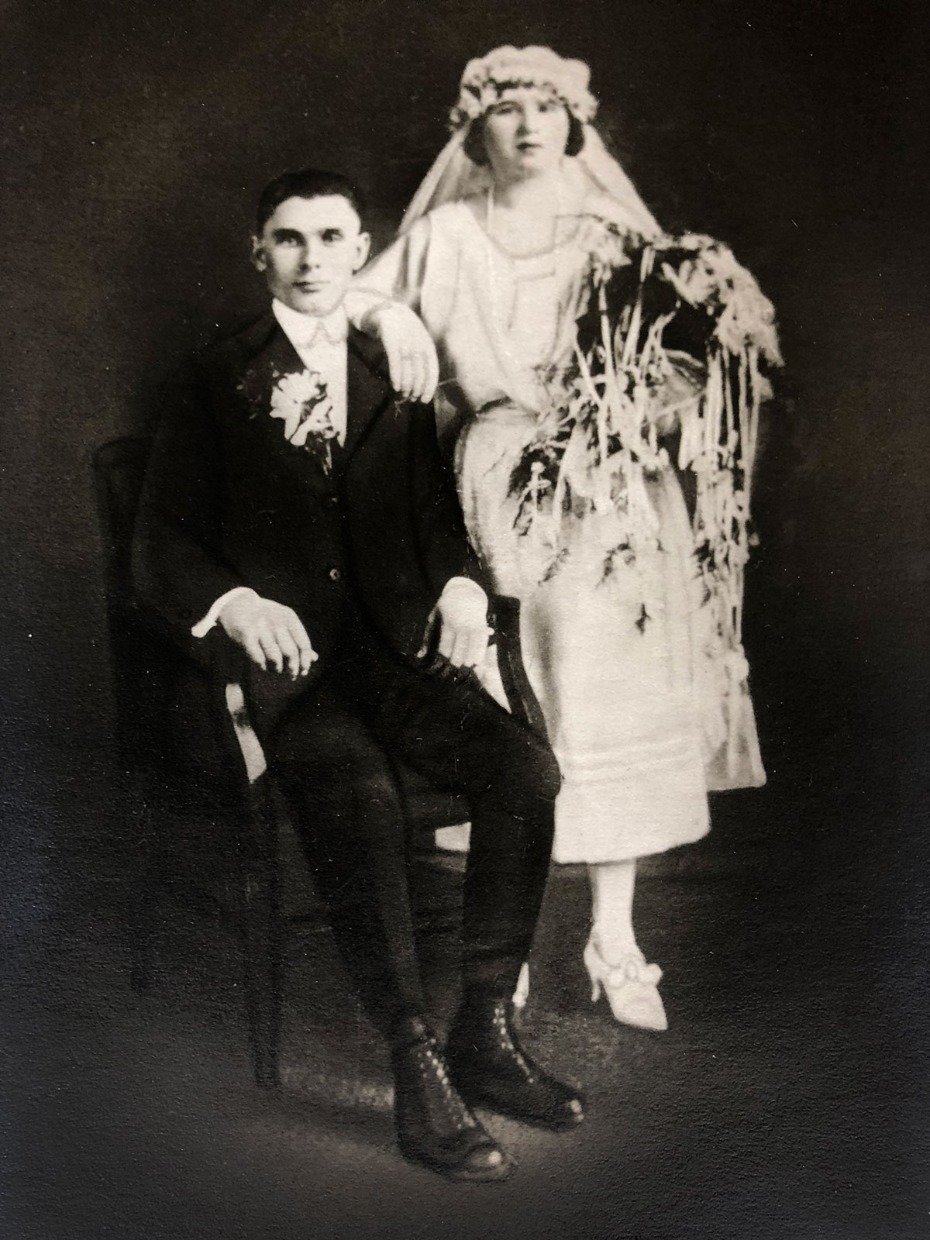
From the most traditional among us to the elopers and runaways, there is nearly always one common thread to any wedding: the wedding dress. Whether it’s a white beach cover up, a gown that would give a Disney princess a run for her money, almost every bride honors their special day with a special dress, and they have done so over one hundred years now. Pictured above is my great-grandparents in the 20s. My great grandma Helen is oh so stylish with her flower crown and cascading bouquet, wouldn't you say?
Our friends from Wedding Journal Online have been doing some research into the tradition, and have been able to supply us with some fascinating facts on the bridal fashion of the last 100 years and just how much it has (and has not) changed.
1910s
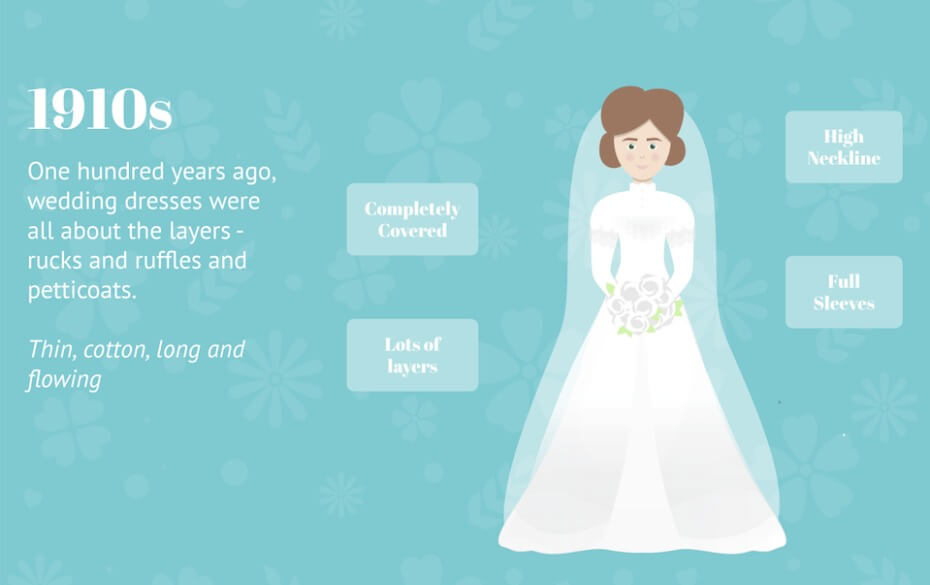
At the beginning of the twentieth century, wedding dresses were all about the layers, with high necks and full sleeves. For a more shapely look, they also wore S-shaped corsets under their dresses to push the bosom forward and hips back.
Many brides carried white roses, but sometimes opted for orange blossoms in their hair, inspired by Queen Victoria’s bridal style in 1840.
1920s
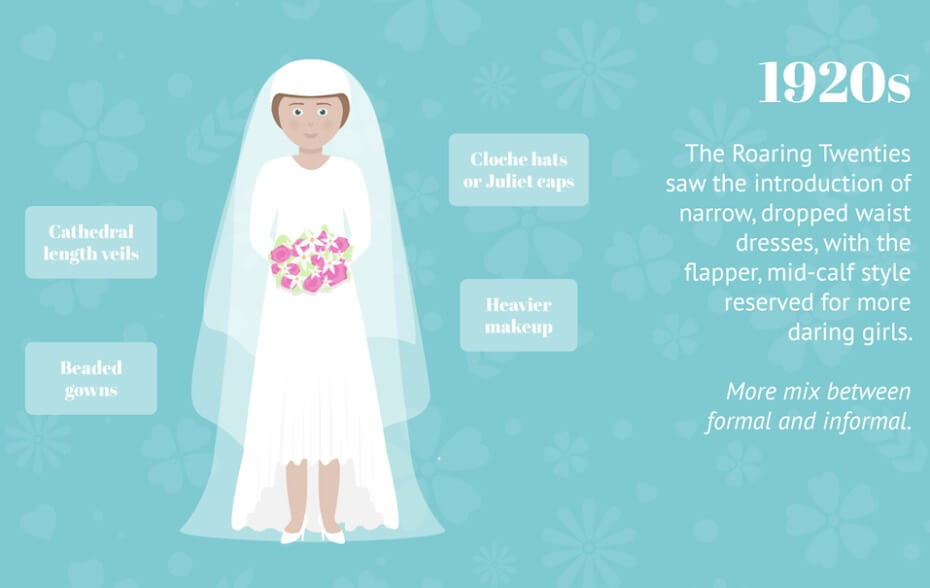
The Roaring Twenties were a fascinating time for women. While many still preferred the more demure layers and coverings of the 1910s, lots of women stepped out in bold, beaded fashions, their dresses skimming their calves in the iconic flapper style. Dropped waists and loose fittings were particularly popular, as were cathedral length veils and dramatic makeup looks.
1930s
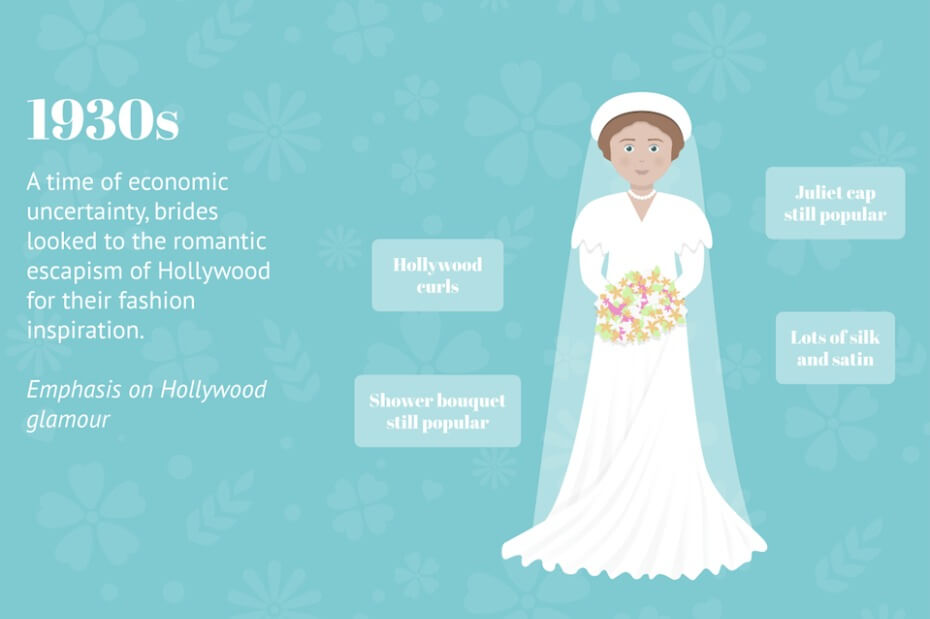
The 1930s saw the peak of old-school Hollywood glamour. It was a time of silks and satin, and so brides, facing the reality of a tumultuous economical situation, looked to their weddings to provide a glitzy escape.
Curves came into fashion again, with many brides favouring circle-hemmed styles, such as the Trumpet or Mermaid style.
1940s
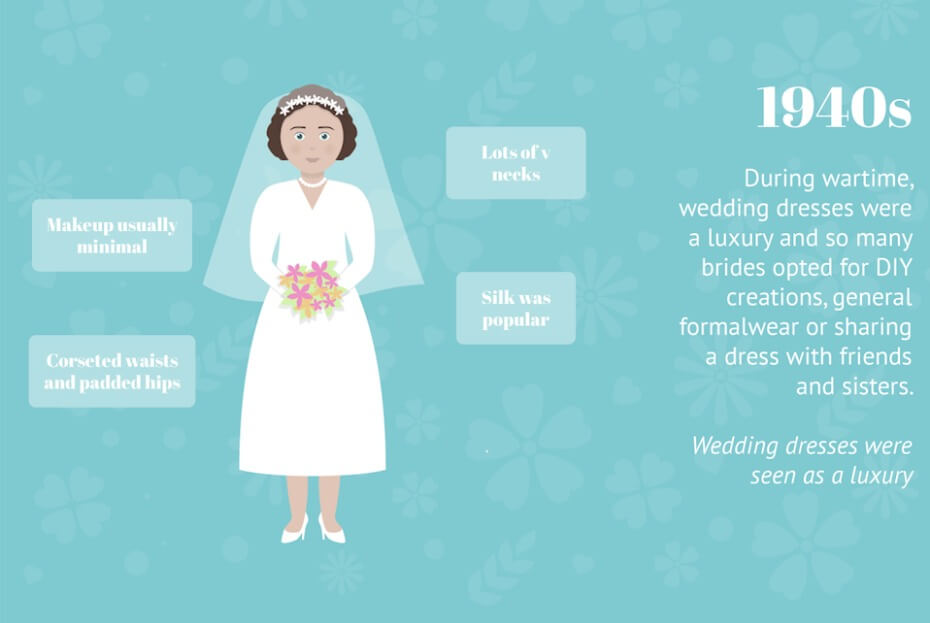
The 1940s were shadowed by wartime. Brides could no longer splash out on extravagant dresses, and so many decided to simply wear a nice dress they already owned, or go DIY on their wedding day look. Some, however, pooled their ration tokens together so that one dress could be purchased and then shared around a group of friends.
Corsets came back into fashion, as did long, thin figures.
1950s
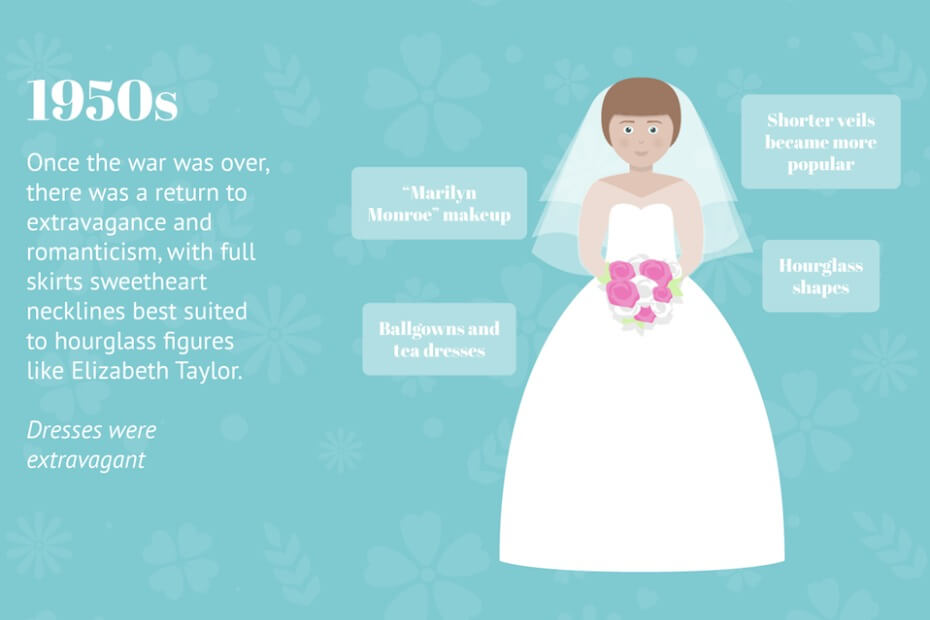
After the war, romantic extravagance returned. Brides celebrated with ball gowns and full tea dresses, with sweetheart necklines and an emphasis on hourglass shapes.
During the 1950s, we also saw the rise of shoulderless dresses and a more ‘Marilyn Monroe’ style of makeup.
1960s
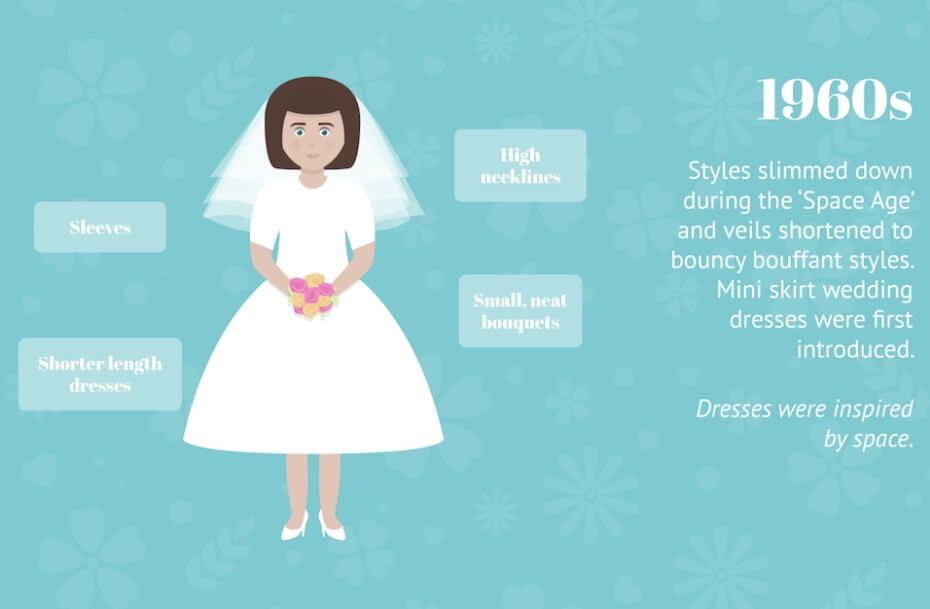
During the ‘Space Age’, bridal gowns slimmed down again, with column dresses becoming more favorable to ballgowns. They also included plenty of metallic embellishments, and a return to high necklines and longer sleeves.
Some more daring brides even opted for mini skirt dresses, with tall, bouffant veils or pillarbox hats to complete their look.
Classic red lips fell out of fashion as well, replaced by pale frosted lips and dark eyes.
1970s
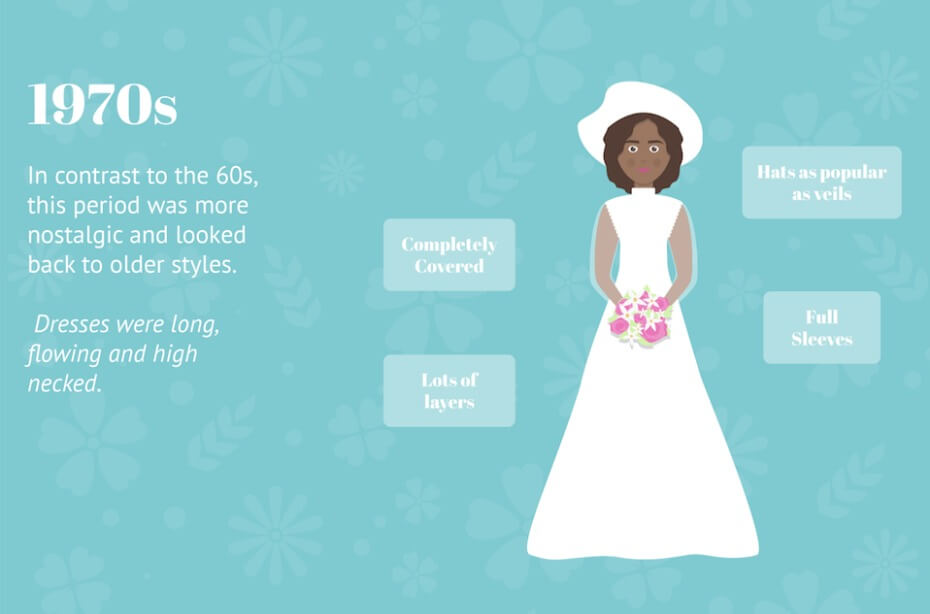
With mutton sleeves, draped fabrics and big, bright bouquets, the age of Flower Power saw brides ditch the tech-infused styles of the 1960s, and return to older fashions. Long, flowing fabrics and a renewed love for lace, there was plenty of nostalgic styling during this time. Veils, however, dropped in popularity, while love for the wide-brimmed hat grew.
1980s
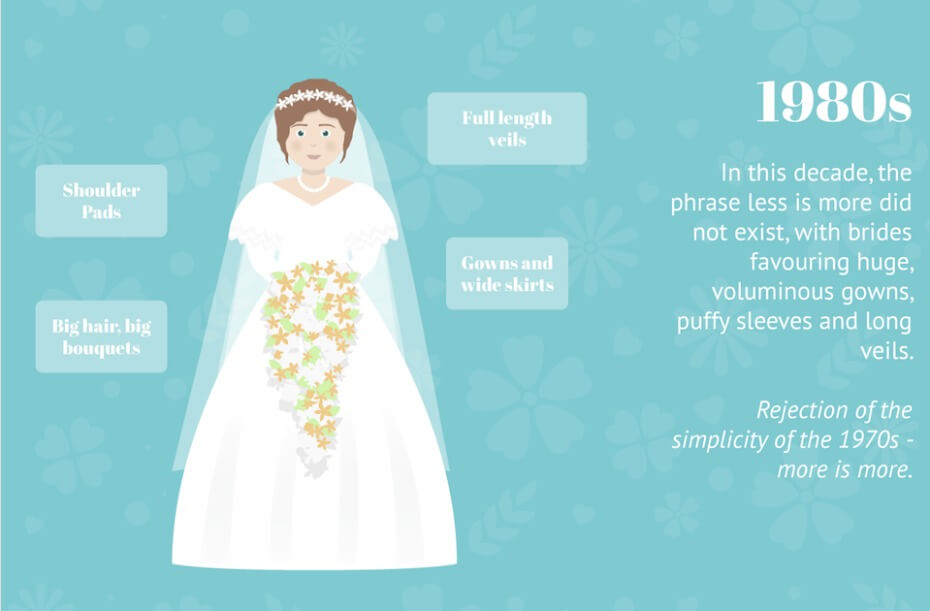
The 1960s and 70s believed in the concept of ‘less is more’. The 1980s, on the other hand, preferred the phrase ‘more is more’. This was a decade of real opulence and luxury when it came to bridal styles, with the return of romantic ball gowns, ruffles and full-length veils. Diana Spencer’s dress in 1981 is a perfect example of this style.
1990s
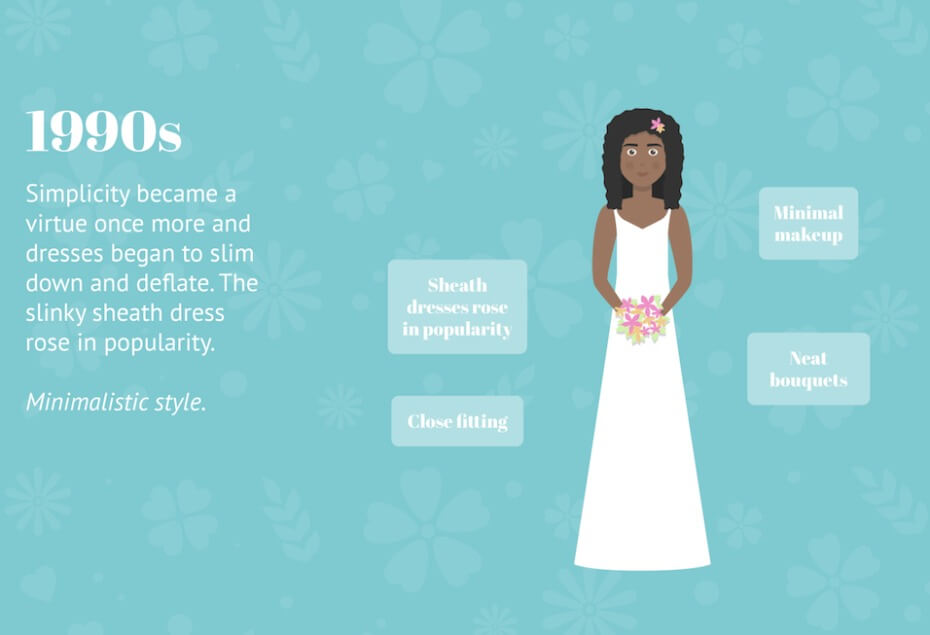
By the 1990s, brides were tired of the fussy looks from the era before. They wanted more minimal dresses, with sheath styles becoming particularly popular, and while close-fitting bodices and ball gowns were still worn by many brides of the decade, they were distinctly toned down. This minimalistic style carried into the rest of the typical bride’s look, with small, neat bouquets and minimal makeup.
2000s
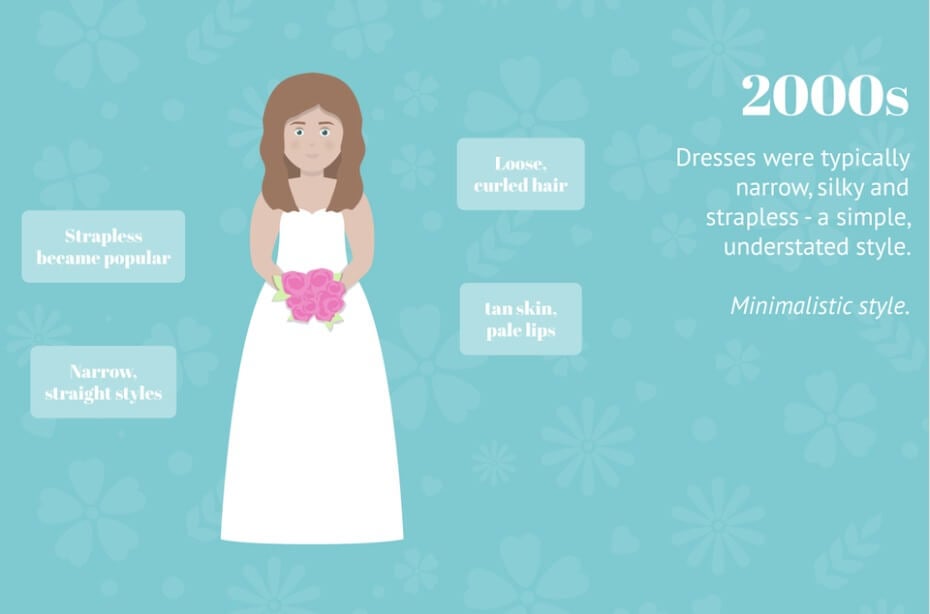
Brides of the new millenium still favored narrowed, straight styles, but had grown bored of veils. Instead, tiaras, flower crowns and fascinators overtook them in popularity, while strapless gowns became a must-have. Lace, too, was overlooked in favor of shinier fabrics such as satin or silk.
2010s
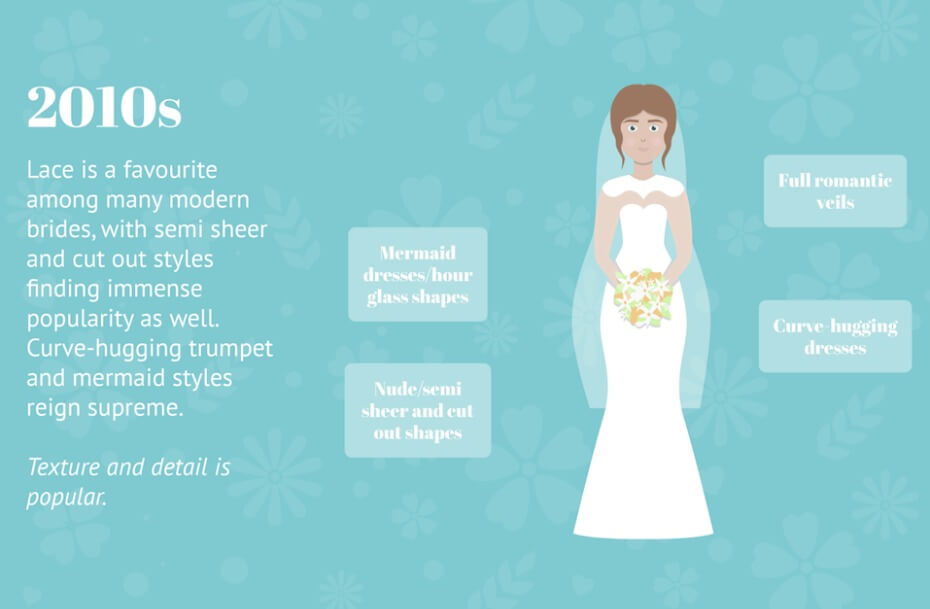
Think Kate Middleton’s sheer sleeves, or Kim Kardashian’s cut-out mermaid-gown and you will have ideal examples of the current decade’s bridal styles. Nude or semi sheer gowns have boomed in popularity, as have cut out shapes. Romance is back in, too, with romantic textures like beading and lace, becoming typical features of any contemporary bride.